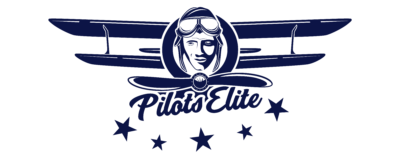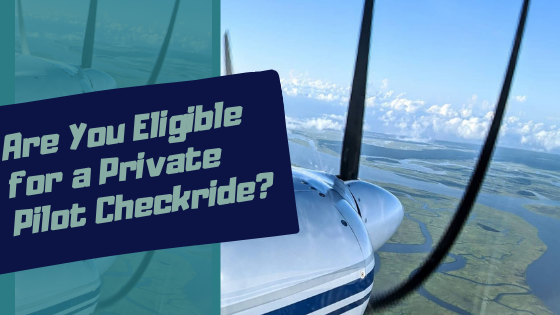Private pilot license requirements and eligibility details for all ages.
Are you thinking of getting your first pilot license? But you can not conjecture what a private pilot license is and its necessities.
A private pilot license is the first level for any aspiring pilot, regardless of pleasure or commercial purpose.
What is a private pilot license?
A private pilot license (PPL) is similar to a non-professional driver’s license. It permits operating a single-engine airplane and acting as a pilot in command (PIC). However, a private pilot cannot work commercially, and contracting a private pilot for compensation is prohibited.
To get a private pilot license, a student must meet specific requirements.
A student pilot receives ground training and typically meets minimum flight hours, takes a written exam (knowledge test) and a practical flight test, and meets medical standards to get a private pilot license.
The license/certificate is issued by the Civil Aviation Authority of the country where you receive training.
For instance, in the USA, the FAA issues private pilot licenses, typically known as the private pilot certificate in the USA. A certificate and a license both refer to the same thing.
Obtaining a private pilot license is the crucial stage for any pilot, regardless of what they intend to do with the certificate.
Pursuing a career in the field with a private pilot license (PPL) is not feasible. Working as a pilot for hire is prohibited, according to the FAR. You must obtain a commercial pilot license if you intend to work as a pilot.
A private pilot license allows you to rent an aircraft and fly for pleasure or charity.
Requirements that you must meet to obtain a private pilot license.
First, identify whether you’re eligible for getting a private pilot license. If you begin flying lessons without being eligible for a private pilot license, you’ll only waste your time and money.
So, determine your eligibility by looking at the attributes in the next section.
Eligibility Requirements for a private pilot license (PPL).
The eligibility requirements for a private pilot license may vary depending on the local Civil Aviation body. However, most of the eligibility requirements are general.
Hence, here is an overview of requirements by the FAA, which is prevalent internationally.
- Age: You must be at least 17 to be eligible for a private pilot license. You may begin pilot training sooner, but for the license application, you must be 17;
- Ample Money: Getting a private pilot license is inexpensive, yet if the oil prices surge halfway through your flight training, it’ll impact your flight training cost and affect your budget.
- Medical Fitness: The applicant must pass a medical examination to demonstrate that they are physically and mentally fit to fly an aircraft;
- Can read, write and speak English fluently;
- Ground Training: The applicant must receive an endorsement after passing a ground school course that includes various subjects such as aerodynamics, aviation regulations, weather, and navigation;
- Written Exam: The applicant must pass a written knowledge test that covers the topics learned during ground school training.
- Flight Training: The applicant must complete at least 40 hours of flight time, including a certain amount of solo flight time and dual instruction. The flight training covers various topics such as takeoff and landing procedures, navigation, and emergency procedures.
- Practical Test: The applicant must pass a practical flight test with a certified flight examiner, also known as a checkride. The flight examiner will test the applicant’s ability to demonstrate various flight maneuvers, planning, and decision-making skills.
SOURCE: ecfr.gov
Ground training requirements:
Before even beginning their actual flight training, most student pilots take private pilot ground school.
The ground school may or may not be online.
However, because of the convenience, many student pilots choose online private pilot ground schools.
On the contrary, many student pilots enroll in conventional ground schools because they prefer to learn from instructors in person. However, student pilots are losing interest in enrolling in conventional ground schools because they are costlier.
The primary objective of taking a ground school is to learn the fundamentals of flying before taking off and obtaining a private pilot knowledge test endorsement.
One requirement to take your practical flight exam (checkride) is to pass your private pilot theory exam. FAA conducts the theory exam, which assures the FAA that you’re ready to take your flying lessons to the next step.
Thus the knowledge test endorsement is crucial, as completing a private pilot ground school.
Medical Fitness Requirements:
To take your flight lessons, you must prove that you are medically fit. Once you pass the medical tests, the civil aviation authority will certify you with a Class 3 medical certificate.
The medical test for getting a Class 3 medical certificate is straightforward. Nothing severe.
However, you must have a few norms before enrolling in a flight school. Such as:
- You must not be color-blind;
- Having a 20/20 vision;
- You will be rejected even if you are deaf in one year.
- Traces of drugs in your blood will disqualify you immediately.
Once you have the medical certificate and satisfactory results, you can apply for a student pilot license, enabling you to take flying lessons in the sky.
To get your private pilot license, you must meet specific medical requirements to ensure you’re physically and mentally fit to conduct flights safely. Here are some of the vital medical requirements for obtaining an FAA private pilot license:
1. Medical Examination: The applicant must undergo medical examinations such as physical tests, hearing tests, visions test, blood tests, and tests for traces of drug abuse by an FAA-designated medical examiner.
2. Medical Standards: The applicant must meet the medical standards set by the FAA. These medical standards cover conditions such as cardiovascular health, neurological health, mental health, diabetes, and eyesight wellness.
3. Medical Certification: The applicant must obtain a medical certificate from the FAA indicating their medical fitness to fly an aircraft. There are three medical certificate classes. The Class 3 certificate is the least stringent. You must acquire the class 3 medical certificate for your private pilot license.
Medical Exemptions:
1. An aspiring pilot may get medical exemption despite failing to meet FAA’s standards only if the condition is managed with proper treatment and monitored frequently.
Note: It’s important to note that medical requirements for a PPL can vary depending on the country or aviation authority that issues the license. Regardless of your training location, the medical conditions are there to check whether you can fly an airplane.
Once you have your Class 3 medical certificate, you can apply for a student pilot license, and you’re ready to start flight training.
The purpose of flight training is to meet to FAA’s flight hour requirements for obtaining a private pilot license.
How many flight hours are required to become a private pilot?
Stage 1: Pre-solo endorsement.
Pre-solo endorsement proves that you are ready for your first solo flight.
Once a flight instructor thinks you are ready for the first solo, you will get your pre-solo endorsement.
Stage 2: First solo endorsement.
This stage comes after Stage 1. After you practice countless takeoffs and landings, your flight instructor will release you for your first solo flight, depending on your performance.
Having a pre-solo endorsement doesn’t mean you can have solo flights.
Prove yourself in an actual flight, and then you can get your first solo flight followed by your First sole endorsement.
Stage 3: Solo flight to another airport within 25 nautical miles.
After your first solo flight comes to stage 3, likely, you went to a different airport within 25 nautical miles a couple of times accompanied by your flight instructor.
After a few flights, your instructor will endorse you for a solo flight to a different airport within 25 nautical miles.
Stage 4: Solo cross-country endorsements.
Now that you are used to flying to new destinations, your flight instructor will endorse you for long cross-country flights.
Endorsement for a long cross-country flight means now you can fly to airports within a 150 nautical miles radius.
This endorsement might come after having at least one flight within 150 nautical miles with your instructor.
If your flight instructor doesn’t trust you for a solo cross-country flight, they will not endorse solo cross-country.
Therefore, you have to work hard to prove yourself.
Checkride (Practical test):
A checkride is an exam where a student pilot demonstrates the ability to operate safe flights with proficiency. The flight test is typically conducted by a certified flight instructor (CFI) or an FAA-designated pilot examiner (DPE).
The examiner evaluates a student pilot’s aeronautical knowledge and decision-making abilities in a practical setting.
The checkride includes both oral and practical segments that include the following:
1. Pre-flight Inspection: The pilot must conduct a pre-flight inspection and explain whether the aircraft is airworthy to the examiner.
2. Flight Planning: The pilot must demonstrate their ability to plan a flight, including selecting a route, determining fuel requirements, and checking weather conditions.
3. In-Flight Maneuvers: Th pilot has to demonstrate practical aircraft control, precise maneuvers, and operational skills. For a private pilot license, the skills, such as takeoffs, landings, climbs, descents, turns, navigation, and communication, are straightforward.
4. Emergency Procedures: The pilots must display their ability to respond to emergencies such as engine failure, loss of electrical power, and loss of control.
5. Navigation: The pilot must demonstrate their ability to navigate the aircraft using visual and instrument references.
6. Communication: The pilot must demonstrate their ability to communicate effectively with air traffic control and other pilots.
Before you get your private pilot certificate, you must prove yourself on your checkride. The checkride is the opportunity to show your mastery, proficiency, and skills to maintain high-level safety on the ground and in the air.
Conclusion:
Here are some of the main reasons why obtaining a PPL is essential:
1. Personal Achievement: Obtaining a PPL is a significant personal achievement and demonstrates high skill, knowledge, and dedication to aviation. Flying is challenging and rewarding if you can pursue it until the end.
2. Access to Aviation: Having a PPL allows individuals to fly a single-engine airplane for personal or recreational purposes, giving them greater access to aviation and the freedom to explore the skies.
3. Travel: Traveling using your tiny aircraft to remote locations gives more flexible scheduling and efficiency in the movement without facing commercial airports.
4. Career Opportunities: Obtaining a PPL is the first step in a pilot’s career progression. It can lead to advanced training and higher-level licenses, such as a commercial pilot license. A PPL can also open up job opportunities such as flight instruction or aerial photography.
5. Education: Getting a private pilot license involves studying and a lot of thorough reading of books about aviation, weather, navigation, and other related topics.
Safety: Obtaining a PPL requires training on flight safety, which can increase an individual’s awareness of potential risks and help them develop good decision-making skills. This can be useful not only in aviation but in other areas of life as well. Overall, obtaining a PPL is a significant accomplishment with many benefits, including personal achievement, travel, career opportunities, education, and safety.
As mentioned above, applying for different pilot licenses requires additional flight hour requirements.
To determine whether you’re eligible for a private pilot license, you must first have available money to spend on a new hobby.
It is not only the money to pay for the flight school. Many other costs are associated with becoming a pilot, which most flight schools do not disclose until you enroll.
RESOURCES:




